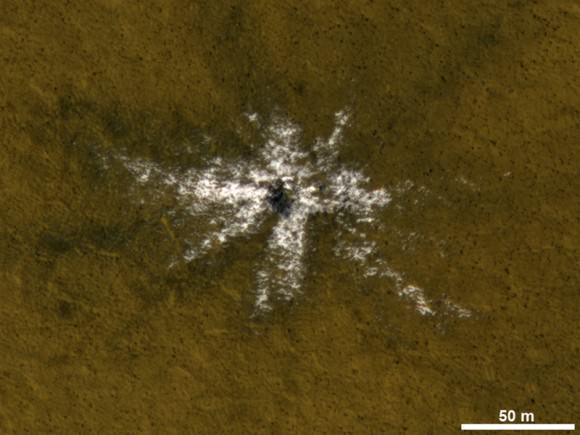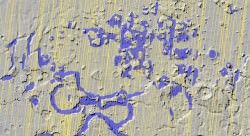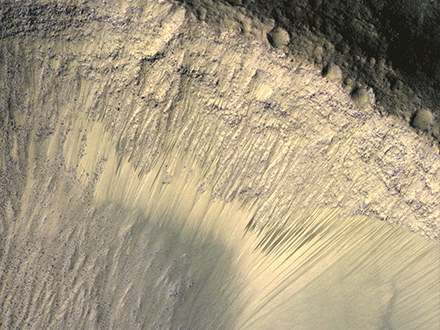Get ready, because here are some more findings about possible water on Mars. This picture above from the Mars Reconnaissance Orbiter is a series showing changing dark lines on an equatorial hillside — which could be an indication of salty water, scientists said.
As MRO circled the planet and peered at the lines with its High Resolution Imaging Science Experiment (HiRISE) camera, it tracked these changes at five locations in Valles Marineris, the biggest canyon our solar system has to offer. The lines were on slopes that faced the north and the south, and most intriguingly, they activated when the sun hit their respective sides.
“The equatorial surface region of Mars has been regarded as dry, free of liquid or frozen water, but we may need to rethink that,” stated Alfred McEwen of the University of Arizona in Tucson.
“The explanation that fits best is salty water is flowing down the slopes when the temperature rises,” added McEwen, who is HiRISE principal investigator. “We still don’t have any definite identification of water at these sites, but there’s nothing that rules it out, either.”

Scientists first spotted these types of features two years ago in the mid-latitudes of Mars, but in that case these were small features (usually less than 16 feet or five meters wide). The slopes observed here range as wide as 4,000 feet (1,200 meters).
Salt can keep water flowing even in temperatures where more pure water gets frozen, and also reduce the evaporation rate. NASA also noted it used data from two other MRO instruments (Compact Reconnaissance Imaging Spectrometer for Mars and the Context Camera) and the Mars Oddysey’s Thermal Emission Imaging System.
That’s not all, however. Scientists also reported 15 fresh craters that excavated ice that used to be hidden underneath the soil of Mars.

“The more we find, the more we can fill in a global map of where ice is buried,” stated Colin Dundas of the United States Geological Survey in Flagstaff, Ariz.
“We’ve now seen icy craters down to 39 degrees north, more than halfway from the pole to the equator. They tell us that either the average climate over several thousand years is wetter than present or that water vapor in the current atmosphere is concentrated near the surface. Ice could have formed under wetter conditions, with remnants from that time persisting today, but slowly disappearing.”
Results were presented at the American Geophysical Union’s fall meeting this week.
Source: NASA

